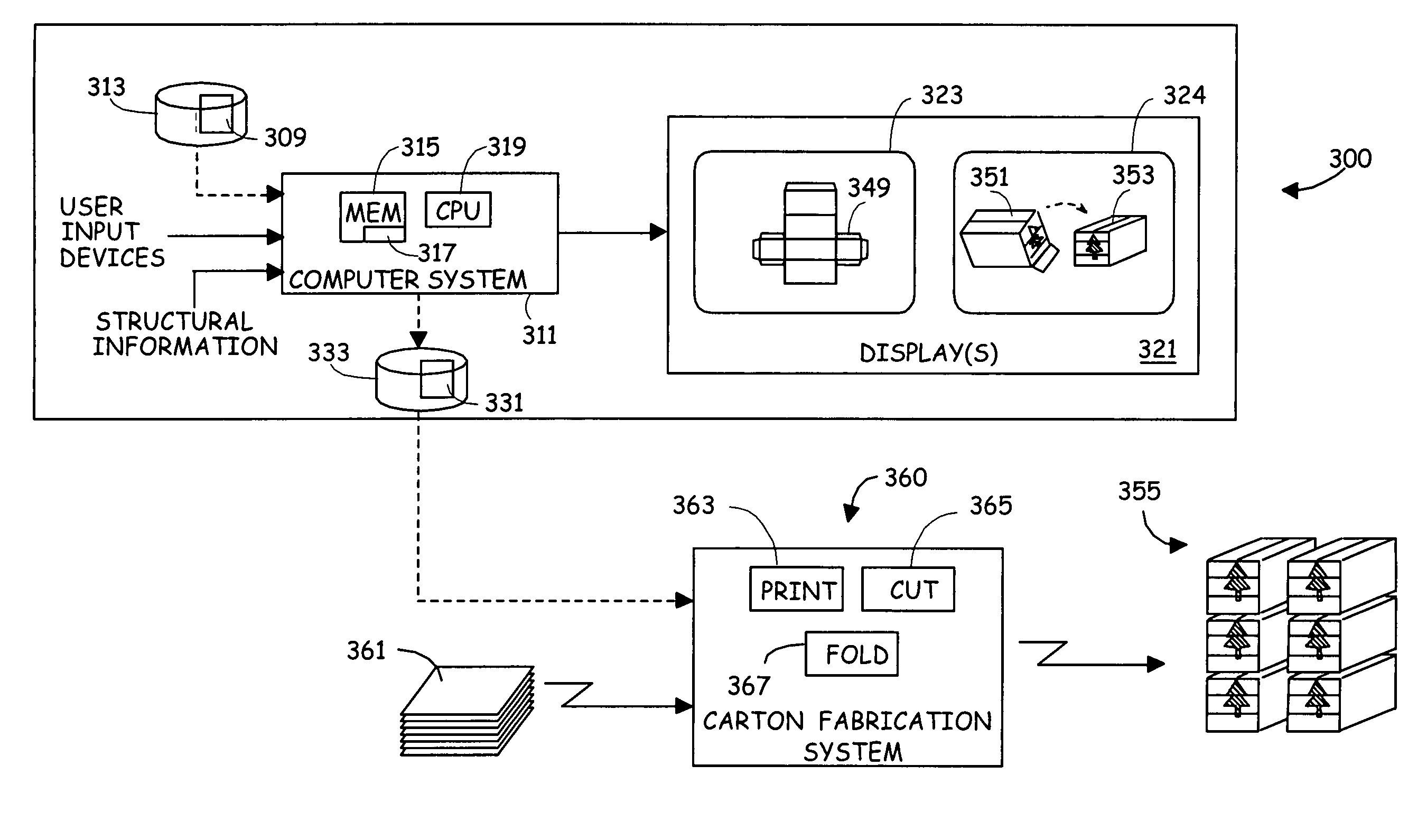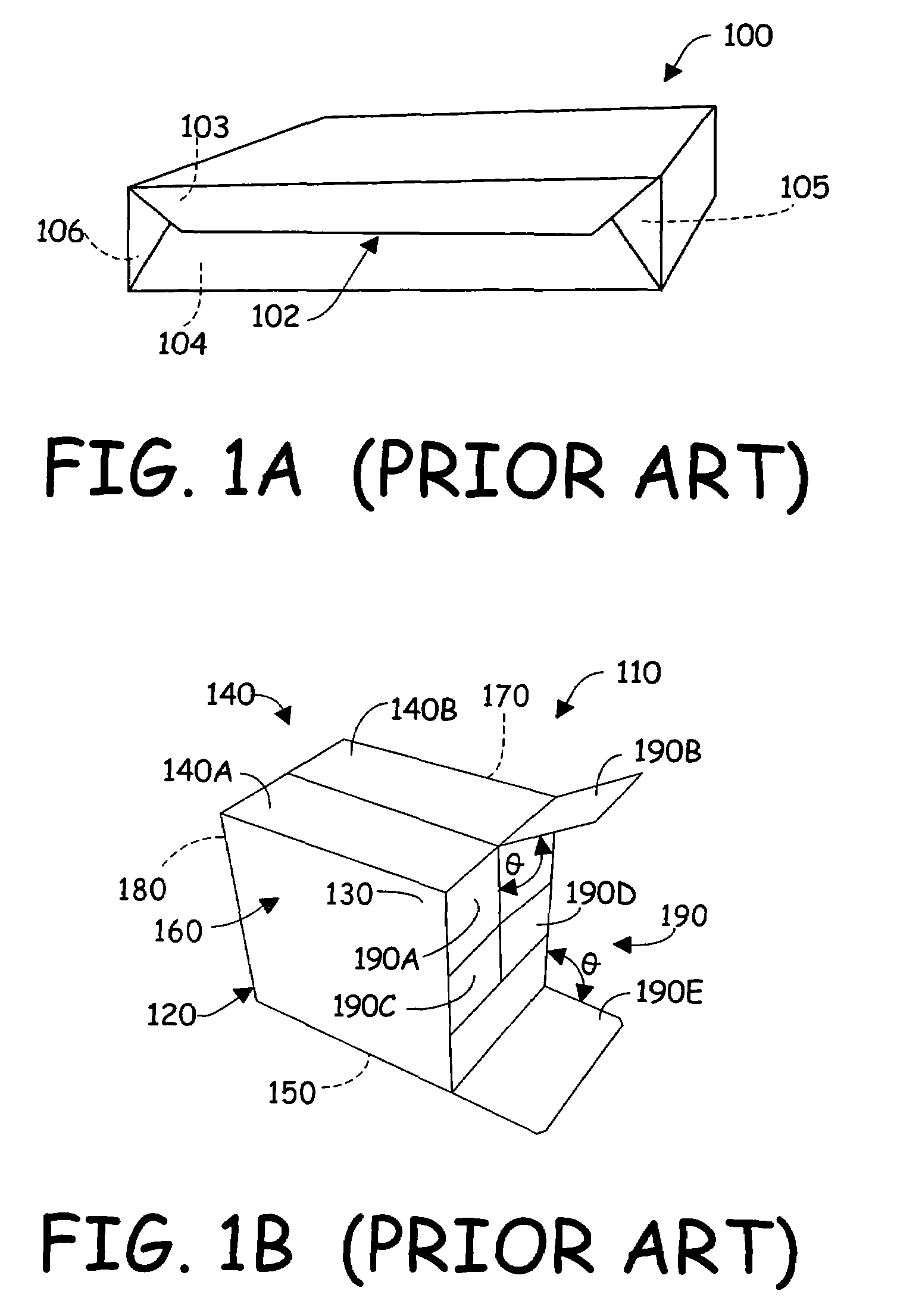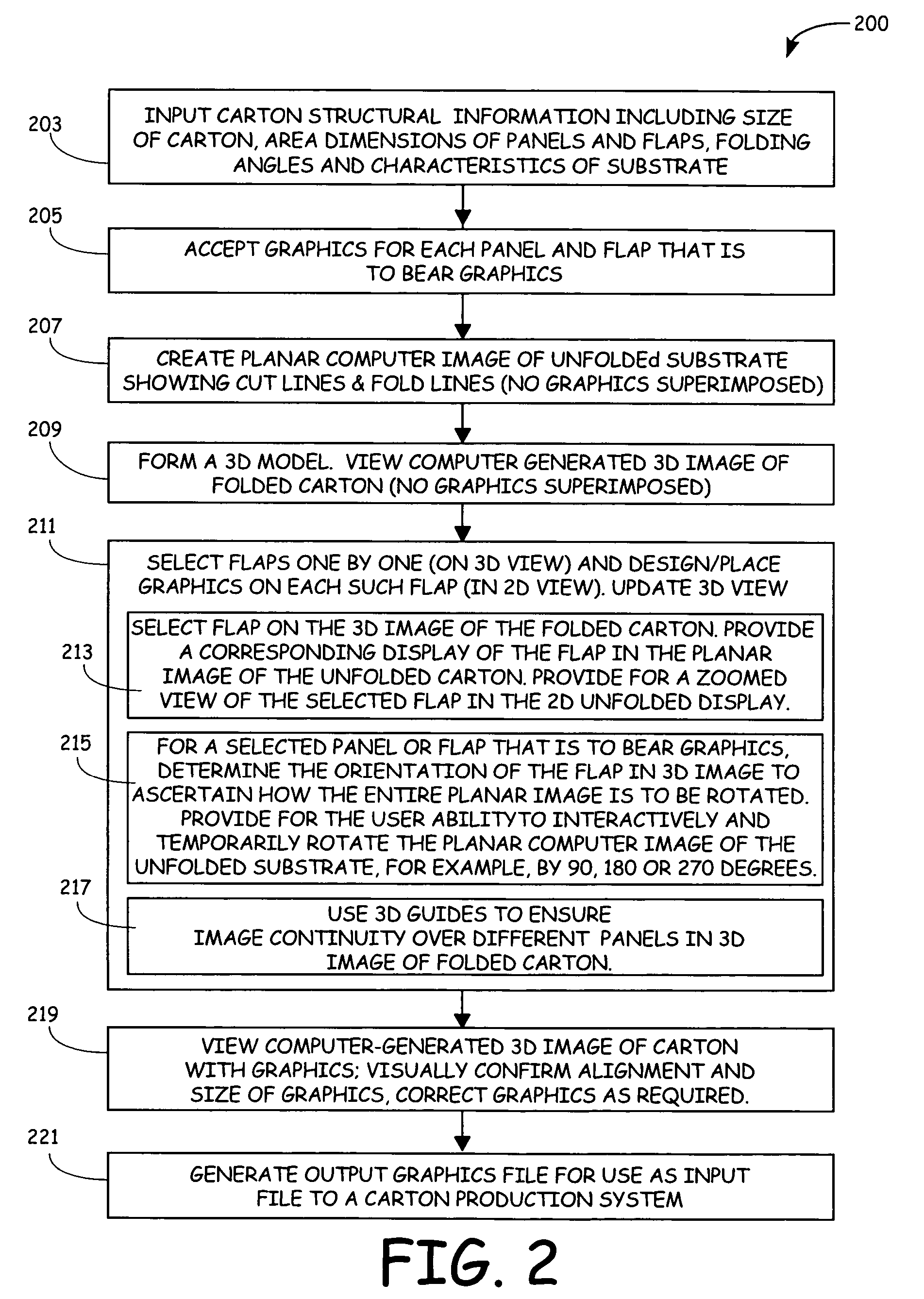Two-dimensional graphics for incorporating on three-dimensional objects
a technology of two-dimensional objects and computerized design, applied in the field of two-dimensional graphics for use on three-dimensional objects, can solve the problems of laborious design and printing, easy error in design and printing, and inability to properly adjust the orientation, size and registration,
- Summary
- Abstract
- Description
- Claims
- Application Information
AI Technical Summary
Benefits of technology
Problems solved by technology
Method used
Image
Examples
Embodiment Construction
[0039]Presented herein is a method, apparatus, and carrier medium carrying code to instruct a processor to execute a method. The method helps facilitate for a designer the proper alignment and sizing of graphics printed on a substrate from which two-dimensional flaps and panels are cut and folded to form a three-dimensional container bearing the graphics.
[0040]FIG. 2 shows a flowchart of a method embodiment 200 of the invention. Using the method 200, two-dimensional graphics can be accurately created for printing on a substrate from which panels and flaps can be cut and folded to form a three dimensional carton with graphics printed thereon. The method provides for a user the ability to achieve good alignment and registration of the overall graphics on the completed three-dimensional carton, with reduced labor and reduced likelihood of human error compared to prior art methods.
[0041]The method of FIG. 2 is implemented on a processing system, e.g., a computer system. FIG. 3 depicts s...
PUM
 Login to View More
Login to View More Abstract
Description
Claims
Application Information
 Login to View More
Login to View More - R&D
- Intellectual Property
- Life Sciences
- Materials
- Tech Scout
- Unparalleled Data Quality
- Higher Quality Content
- 60% Fewer Hallucinations
Browse by: Latest US Patents, China's latest patents, Technical Efficacy Thesaurus, Application Domain, Technology Topic, Popular Technical Reports.
© 2025 PatSnap. All rights reserved.Legal|Privacy policy|Modern Slavery Act Transparency Statement|Sitemap|About US| Contact US: help@patsnap.com



